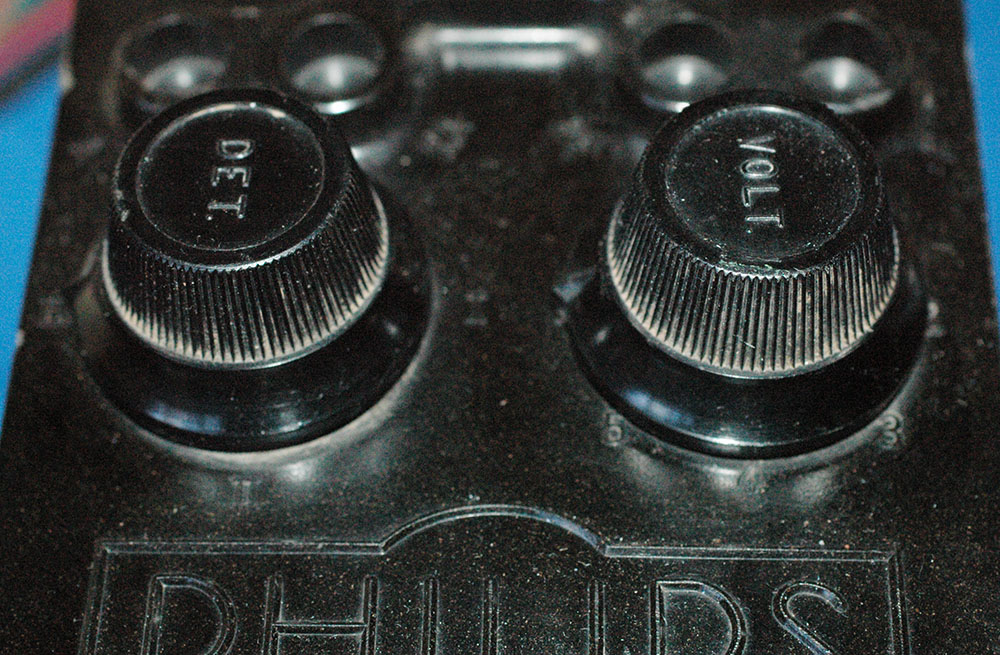This is an HT supply
unit designed exclusively for 200-250 volt DC mains.

This early power supply, with a moulded
bakelite panel, was introduced by Philips in 1928 and was designed
to replace the HT battery in a battery powered receiver. It's
serial number on the bottom of the steel case is 21794. In those
days batteries were expensive so to save power (by dissipation
in dropper resistors) more than one supply voltage was required
and these were supplied by several sockets on HT batteries of
the time.
This battery eliminator therefore has
outputs for two supply voltages via the socket at the bottom
governed by the settings of the controls pictured below. To provide
a universal product the HT outputs are varied by a three-way
and a seven-way rotary switch and rheostats. The "VOLT"
controls are for the set's output valve and the "DET"
control is for the remainder of the set.
I guess there must have been a detailed
instruction sheet advising users to initially set the voltages
to a minimum (or if a voltmeter was available to set them to
the correct levels). Then, from the minimum settings to gradually
increase the HT outputs until the receiver worked normally.

Slightly mysterious are the
sockets A, RA, RE and E. The purpose of these is explained on
the label below. Maybe these are provided to guard against reverse
connection of the mains supply?
The mains input is via the two-pin socket
at the top. You'll note a 2-pin connector so there's no mains
ground connection but sets in those days were designed to be
fitted with a good ground connection to their chassis, but the
label warns against this. Whether or not the case of the HT unit
is connected to the "E" socket remains to be seen...
DC mains obviously had a positive and
a negative supply wire and as you can see the mains socket is
not polarised so the unit can be connected back-to-front as easily
as the right way round. The instructions on the label are clear
in this respect... "If no results are obtained turn the
mains plug round".
I doubt whether everyone read and clearly
understood the instructions so lots of people would have blown
fuses and received shocks... |